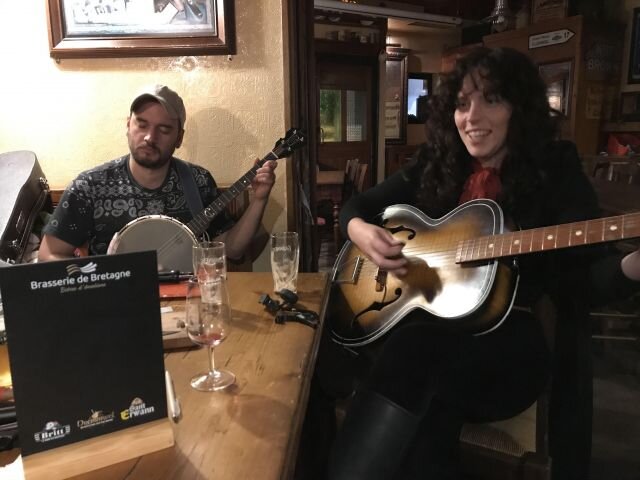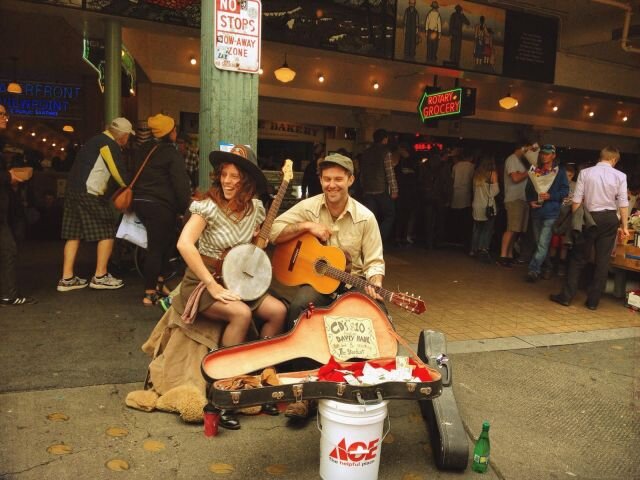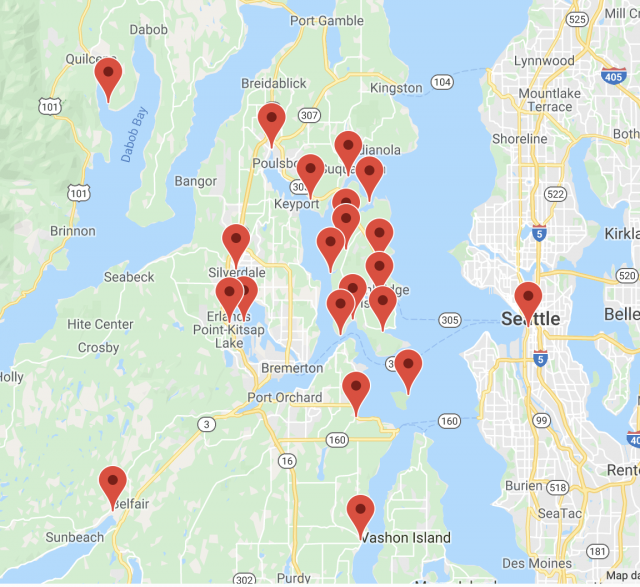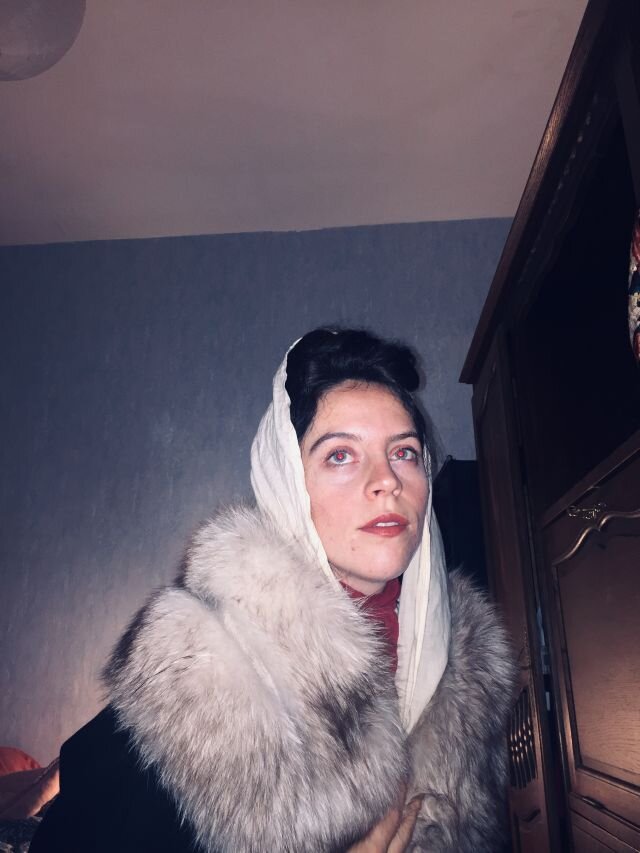It's possible that from a playground song I learned which words to leave out. Here's the song in question:
Miss Susie had a steamboat the steamboat had a bell, Miss Susie went to heaven, the steamboat wen to Hell-O operator, please give me number nine, and if you disconnect me, I’ll chop off your behind the ‘fridgerator there sat a piece of glass, Miss Susie sat upon it and broke her little ask me no more questions, I’ll tell you no more lies, the boys are in the bathroom zipping up their flies are in the meadow, the bees are in the park, Miss Susie and her boyfriend are kissing in the D-A-R-K D-A-R-K Dark, Dark, Dark. The Dark is like a movie the movie’s like a show the show is just like Nick-at-Nite and that is all I know I know my ma, I know I know my pa, I know I know my sister with a 40-acre bra.
Then the memory deteriorates.
Please give me a nickel?
Please give me a dime?
Something about a motorcycle, or a car, or a boyfriend?
Or are these different lyrics, the folksongs of America regurgitating endlessly in my memory? How do I know I know the words? I understand this song is how I learned what not to say. Instead of being spoken the bad words bleed into new sentences. If you pause too long you’ve said Ass, you’ve said Hell, you’ve said flies as in zippers. But there was one on the playground of Ordway Elementary who was not afraid to say swears and that was Aubrey Shepherd Smith and she said fuck.
This was the worst word. I was terrified of the sound. Madison said it too after Aubrey. I couldn’t. I couldn’t form that morsel of language. It didn’t seem right. It was a curse. God would remember. But Aubrey’s family were Gods. Her uncle was in a band called Soundgarden, which, in that year, 1996 or 1997, would have been at an all time career fuck you high.
This was the pacific northwest. There were badasses in the shadows. Cool kids on the back of the bus. Rollin’ down the street smoking Indo, sippin’ on gin and juice, laid back, got my mind on my money and my money on my mind. A boy sang this and others listened and learned, and learned, that this was cool. What was Indo? I knew what juice was. I thought I did. Came in a cardboard box with a straw.
Sometimes I think about all that trash. What if everything I ever threw away showed up in the same house on the same day? What would I recognize? What would agonize me to see again? I think it’d be the simple fact of gross accumulation. This is what disturbed me most as an 18-year-old living in Bulgaria. There were piles of single-use plastic and garbage lining the highways and clogging the intersections going into villages. Ditches were dammed along the fields of shepherds. It was a country so unused to waste that it knew not how to hide it.
Waste. Silences. I’m looking at you. When there is too much there is either an excess or you be quiet. What to do with the overflow. God what an annoying and impossible thing to even talk about.
And that’s the very disturbance that brought me to my mom’s yearbook. The sense that her past on Bainbridge Island was hidden too well, and how could that be? How could she had undergone an existence here and leave so few traces of it? There was the yearbook, and there was the 1984 Bainbridge Island High School Senior Cruise VHS tape.
My grandfather had a home video camera long before this was a normal practice. He was and documentary film-maker disguised as a general contractor and auto-mechanic. In the video, he’s on the senior cruise, interviewing the fresh graduates. I see my mom at 18. I see her friends and their hair, and how they used to move. I compare this with how they move now. I know them as adults. My mom and I grew up in the same down. I know the slanted road leading down to the public dock that’s in the video. I’ve been here many times. Or is it there? The ship pulls away and out into Eagle Harbor, and the graduates burst into a chorus of Help Me Rhonda. Did my grandfather egg them on? Or was this spontaneous?
This song sticks with me as a child. Help Me, Rhonda. Who is Rhonda? How do the graduates know her? Why do they in 1984 all know this piece of music? I have no context. I’ve never heard the original version by The Beach Boys-
but when I’m on the ferry with my girl scout troop, troop 133 in the back of an SUV, we listen to Oldies 97.3 fm and some how, we are all singing the words to songs from the 1950s and 60s which I have no recollection of hitherto hearing. I just know them. American music.
My grandfather sticks me and my 2nd cousin in the backseat of a refurbished Model-T Ford. He is one of the premiere restorers of automobiles alive, in the world, today. Same one who made the home videos.
Is part of my familial lineage an obsession with the refurbishment of the past? Or is that a general American Way? Anyway. I’m in the Ford.
And we are going to a secret place in the farmlands around Kingston, Kitsap County, Washington. On the drive my 2nd cousin asks me, who is your favorite musical artist? I respond, J-Lo. I know I am being slightly disingenuous. I do like J-lo. Especially on the track popular at that time, featuring Ja Rule, I’m Real. But I am also saying J-Lo because I know it will make me sound cooler.
I find great relief when we turn down the private lane, almost hidden in the tall grasses. The road winds until we reach an oasis. It’s a secret drive-in. A metallic diner lodged deep in this field. Brought here but someone else obsessed with maintaining this portion of history as a social club. Yes, my grandparents did literally meet at a drive-in like this in high school. We park in a slot flanked by vintage automobiles, which were so ubiquitous in my early life on account of my grandfather’s profession, that I really just believed they were everywhere.
And we went into the diner, the My Girl Drive-In, and we bought milkshakes and sat in vinyl booths and watched an Elvis impersonator go through the motions. Rock n’ Roll played from the jukebox. I enjoyed the sounds I was hearing. This was different from my relationship to pop radio. There was no forcing the interest. A Marilyn Monroe impersonator also appeared. It was 2002, but part of us was stalled mid-century.
It was even that way, it seemed, for the high school seniors, screaming ’84! and Help Me Rhonda! on the VHS tape I worshipped, watching over and over over childhood, trying to make tangible the stuff of my mother’s past.
There was also her yearbook. These were hallowed pages full of clues. I came to know the high school seniors of 1984 almost like friends or deities. Their pictures, their senior quotes, their hairstyles are etched in my memory. For the most part, the images were glamour shots, stylized in the fashion of the time.
But there was one at the end of the alphabet, who did not conform. He was called Andrew Wood. And the name of his first band, MLFNKSHN, was written in the space where his senior quote should go. His face was painted stark white. His eyes were rounded by dark paint and his mouth with black lipstick. His long blonde hair cascaded to his shoulders and led to a body just out of the frame.
I asked my mother about Andy. Sometimes multiple times a day. She told me he was dead. He had become a rock star. She told me he didn’t say much in class, but every once in while, he’d raise his hand and say the most profound thing.
The music of Mother Love Bone, is not my favorite, exactly, but the personage of Andy Wood, frontman, is. He died of a heroin overdose just before his band got big. But not before the release of a record which is considered the origin place of all Seattle grunge which followed it. Andy Wood is not well known, but his influence is extremely far-reaching.
His blend of of glam and stadium rock - a football fan in lady’s clothing - howling long ballads into the furthest reaches of wet basements - is the stylistic foundation of the grunge genre which bloomed in his wake. And Andy dreamed it up on Bainbridge Island. He dreamed it up while in school with my mom. He’s not on the VHS tape of the senior cruise. He’s not on the boat. But he is somewhere, ephemeral, he lives on in the recordings- a song called called Chelsea Dancer, in the bleach blonde hair of Kurt Cobain, in the bandmates who dispersed after his death becoming Pearl Jam, becoming Temple of the Dog, brushing against Soundgarden whose code of coolness seeped to Aubrey and then into my ears the day she said fuck on the playground.
Transmissions. An unbounded oral history that no one talks about. There is a connecting thread between times. This is what I believe. This why I am so disturbed by the idea that things can just be thrown away. Because it’s not true. Garbage is just buried. There are rusted out cars in the 2nd growth forests. Andy Wood lived here and we sing songs as we jump rope, clap hands. The radio transmits oldies and newbies alike. Shift the dial, mind on my money and money on my mind Rhonda you look so fine.
I am so sure of the constant drone between generations. I am so sure that the chants of the graduates, ’84, ’84, ’84 were echoing still when in 2009 Lady Gaga howled Pokerface on the school bus as we waited to board to boat. This time I was graduating high school. It was my senior cruise. I coaxed the others around me into incantation, ’09 Box of Wine, ’09 Box of Wine.
I chanted as through my grandfather was making a home video of the moment. One that my theoretical daughter would watch to learn how to be, how to speak, what to say, what to omit. I was chanting the way my mom’s generation taught me how. I was chanting as though I was part of something sonic and singular, and the waves crashed underneath the piers of so-called Elliot Bay, where for some generations, some of the population has pretended that when people die their songs die with them.
Subscribe to my seasonal newsletter.
Photo of Annie Ford and Melanie Curran by duskin drum












